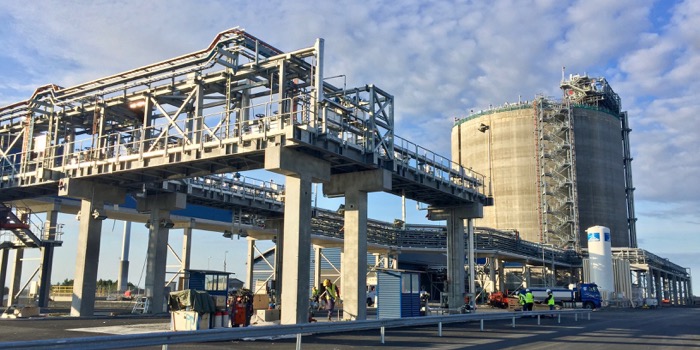Gasum has partnered with a new customer for LNG deliveries from Manga LNG Terminal in Tornia, Finland. Gasum will deliver LNG to Eastman Chemical Company in Oulu, Finland from the second half of 2020.
The company’s switch to LNG is part of Eastman’s commitment to environmental stewardship. The LNG will be delivered from Manga LNG terminal in Tornio, Finland. The LNG terminal is significantly improving the availability of LNG for marine, traffic and industrial segments in Northern Finland and Sweden.
The LNG will be delivered from Gasum’s LNG intermediate storage tank at the Manga LNG terminal in Tornio. The terminal is the biggest LNG terminal in the Nordics, enabling direct LNG deliveries to end-users. The LNG will be delivered from the terminal to Eastman by tanker trucks. The deliveries show the possibilities of the uses of LNG as an energy source in marine, traffic and industrial segments in Northern Finland and Sweden.
“At our Oulu site in Finland, we are currently implementing more sustainable technologies by switching to LNG. Eastman’s partnership with Gasum has been truly incremental in our journey to improve our environmental footprint,” commented Sabine Ketsman, Vice President and General Manager, Eastman.
“In order to reach the ambitious emission targets that were set by the EU we need to make environmentally-friendly energy choices. We are very pleased that forward-looking companies such as Eastman are choosing to use LNG in their industrial processes and we are excited to begin this partnership,” stated Kimmo Rahkamo, Vice President, natural gas and LNG, Gasum.
The need for alternative, low-emission fuel and energy options is increasing rapidly as companies need to meet their national and international emission target requirements. The European Union has set a target of reducing greenhouse gas emissions by at least 40 percent by 2030 compared to the emissions levels of 1990. In order to reach these targets, an increasing number of companies are switching from traditional fossil fuels to low-emission fuels such as LNG.
Compared to traditional fossil fuels such as Heavy Fuel Oil (HFO), the use of LNG releases no sulphur, particulate matter, nor NOx (nitrogen oxide), and improves local air quality. In the future, the LNG infrastructure can be utilised for the distribution of liquefied biogas (LBG). LBG is a completely renewable energy source that reduces CO2 emissions by as much as 85 percent compared to traditional fuels.
For more information visit www.gasum.com












